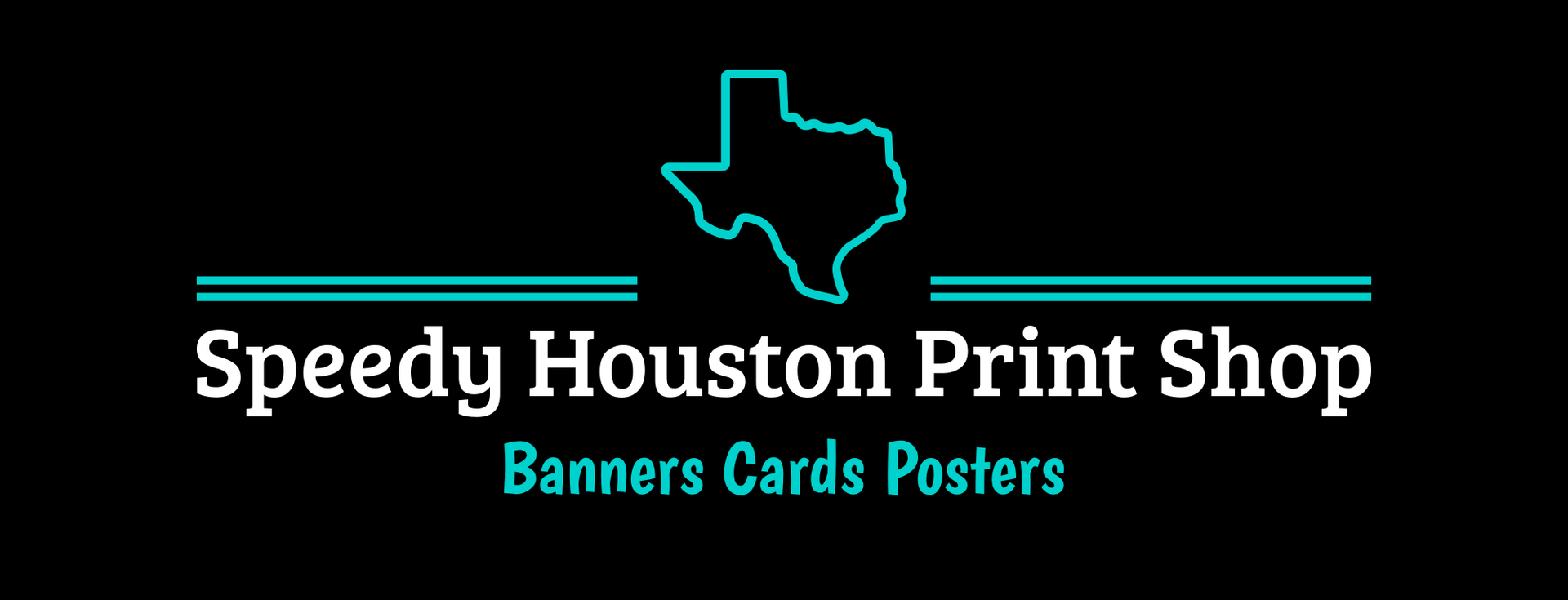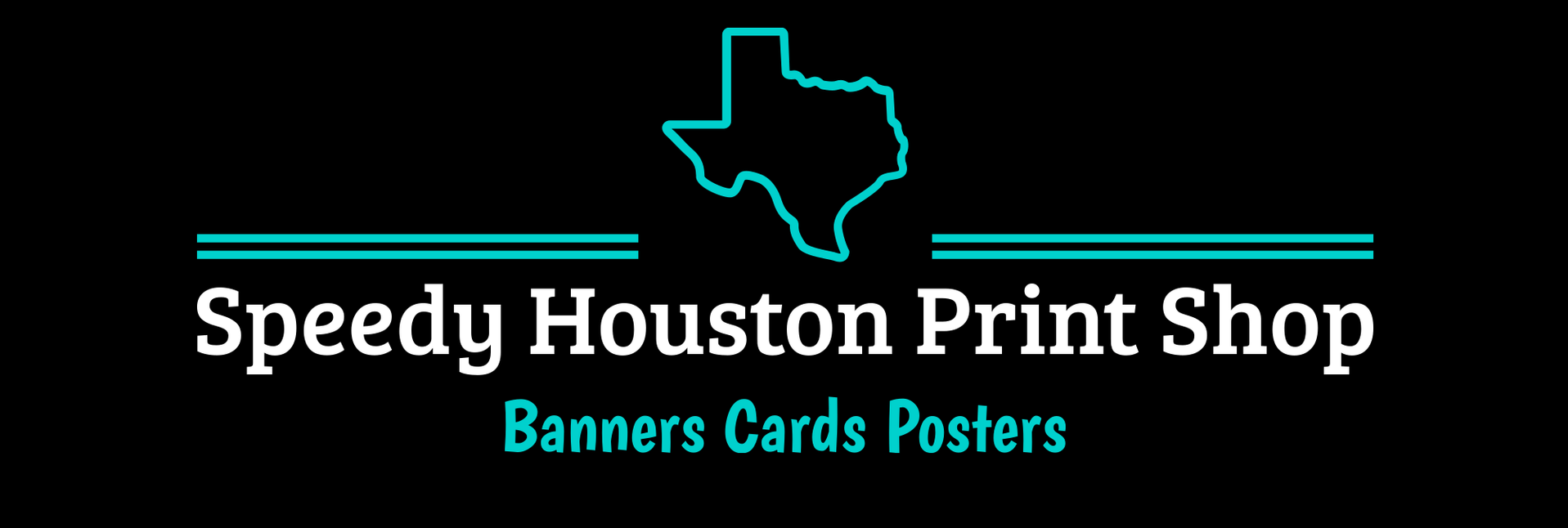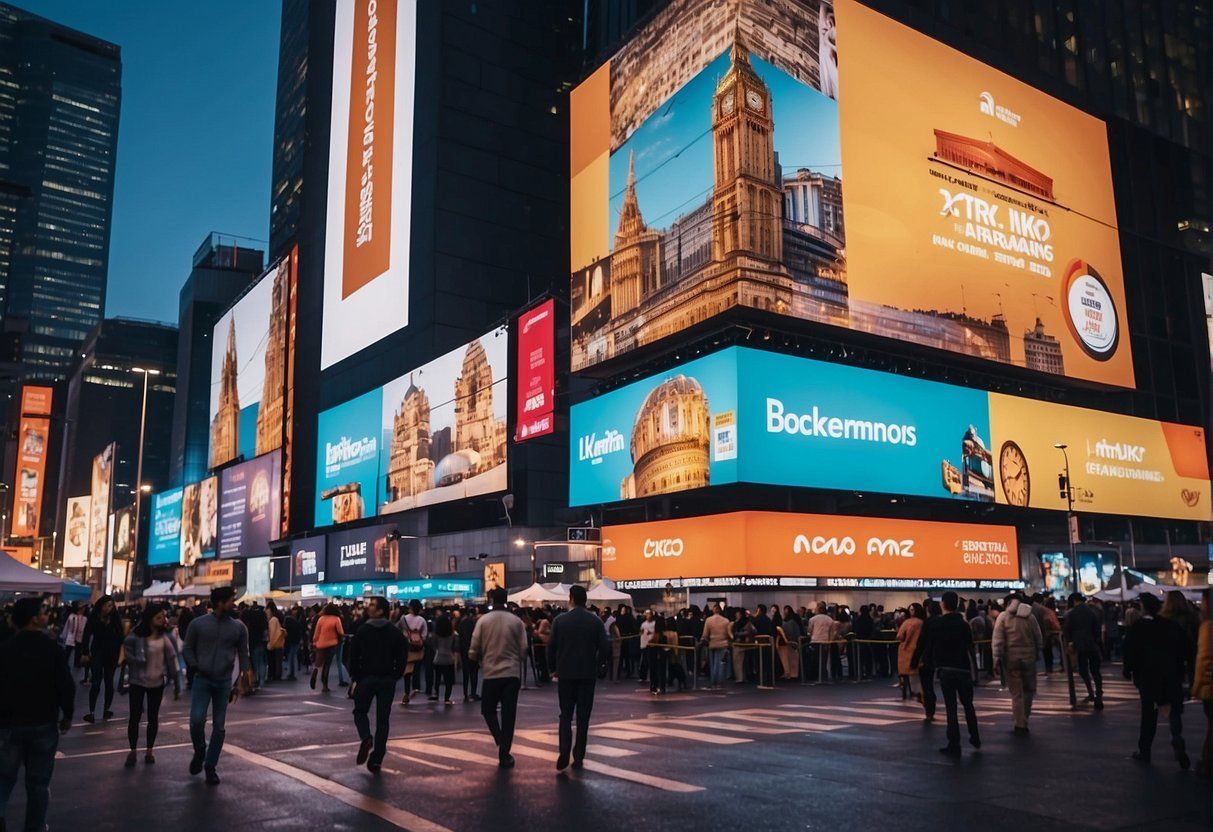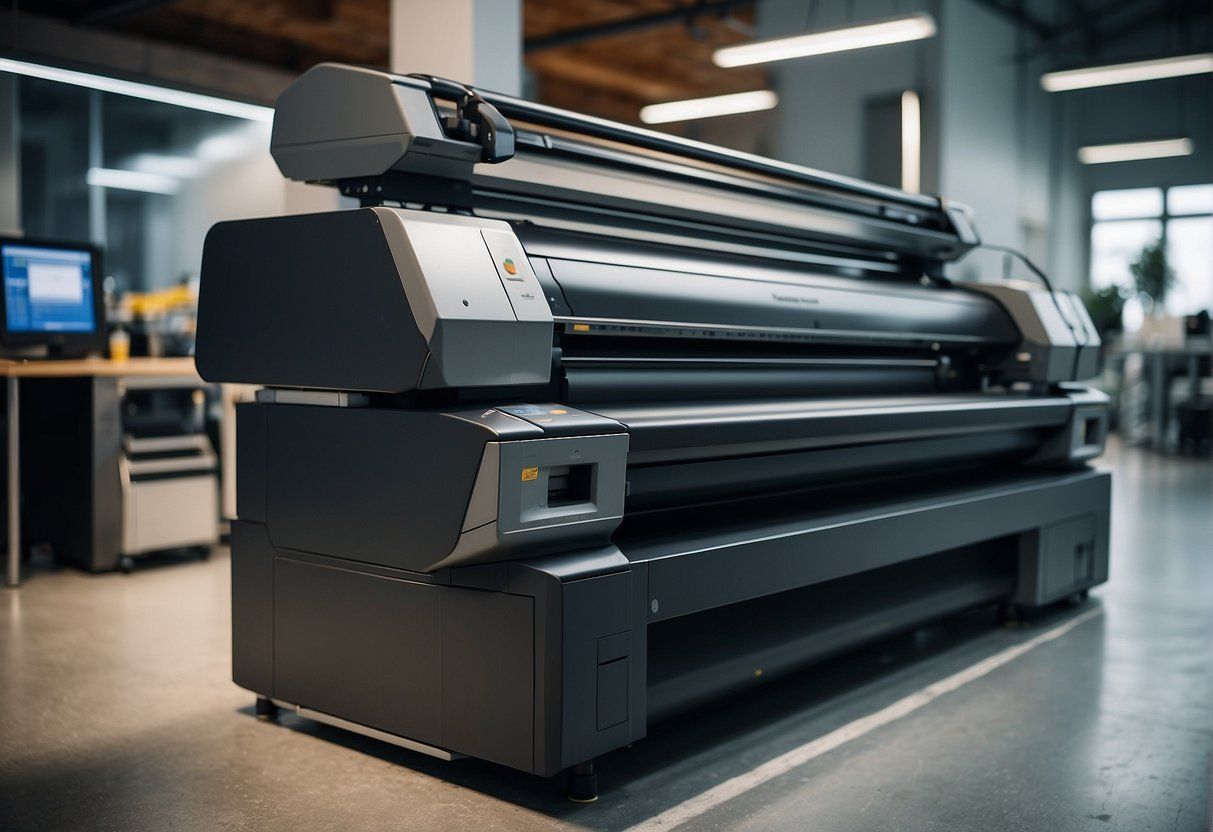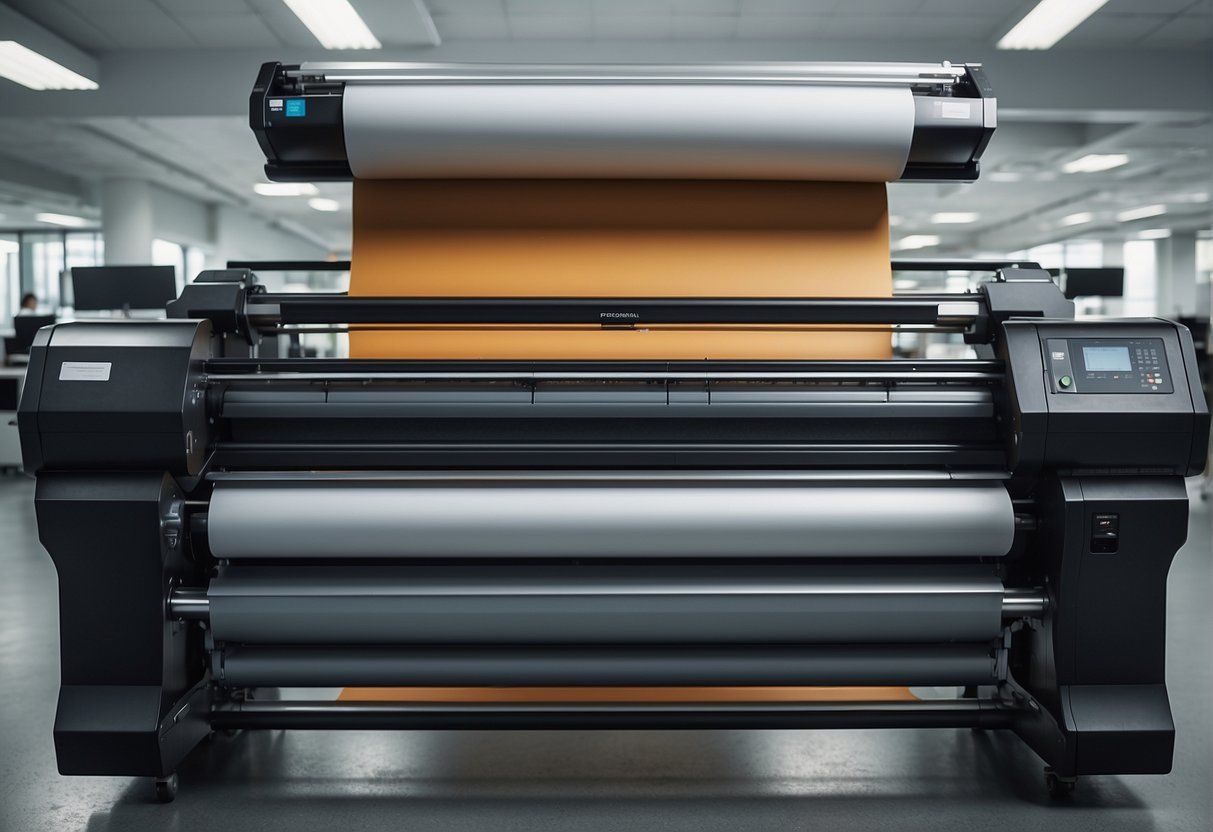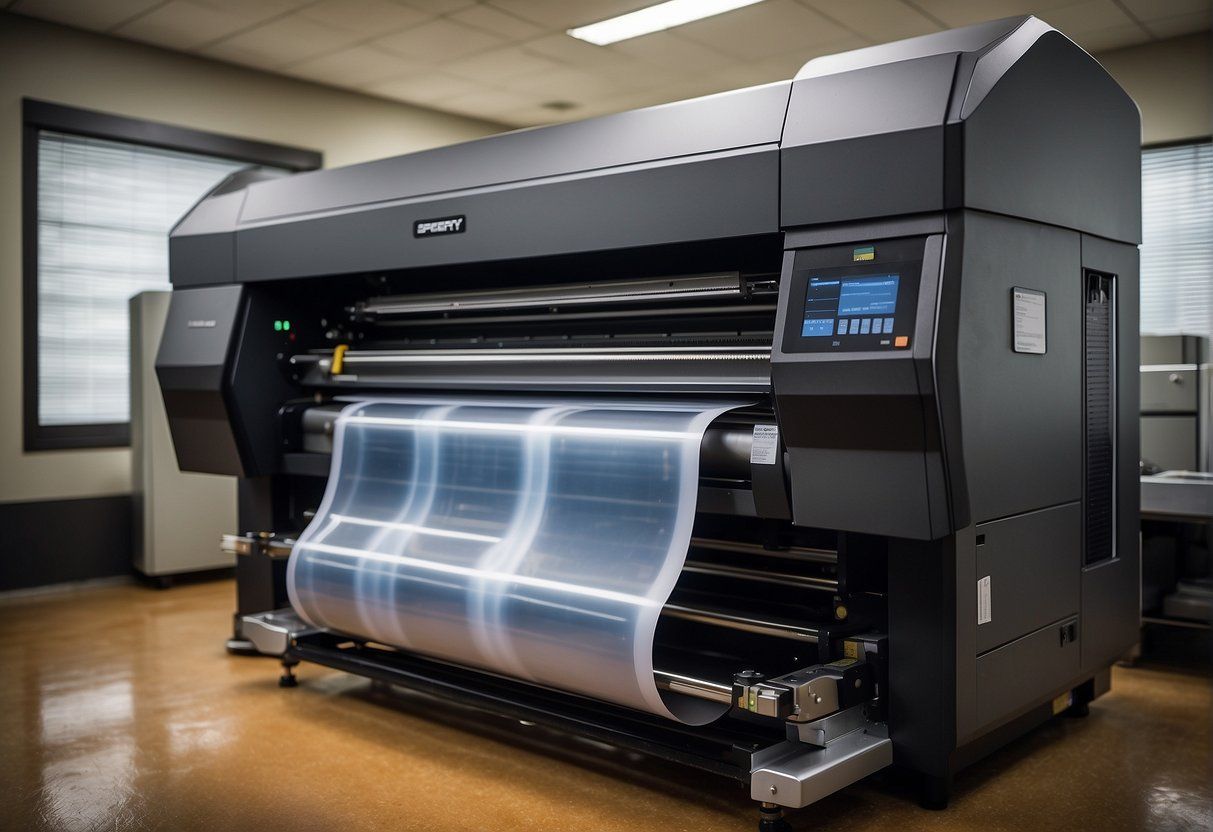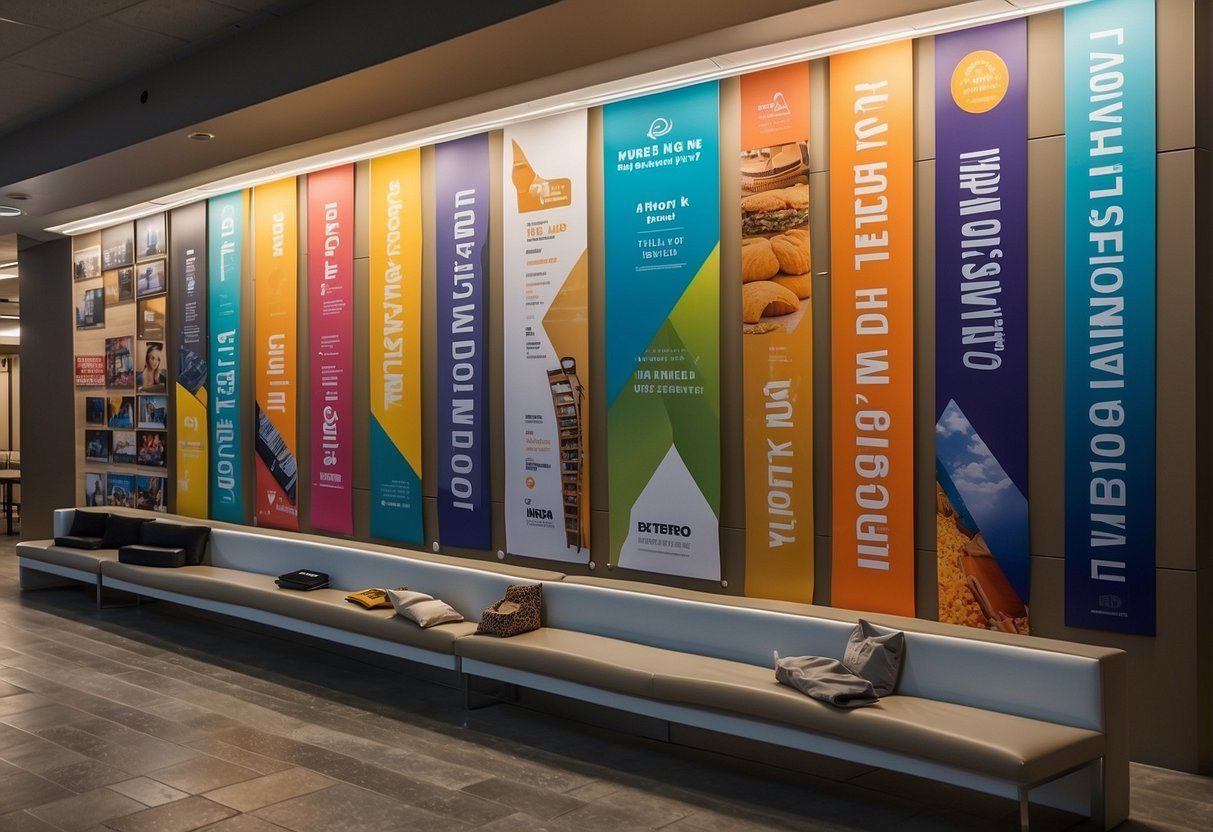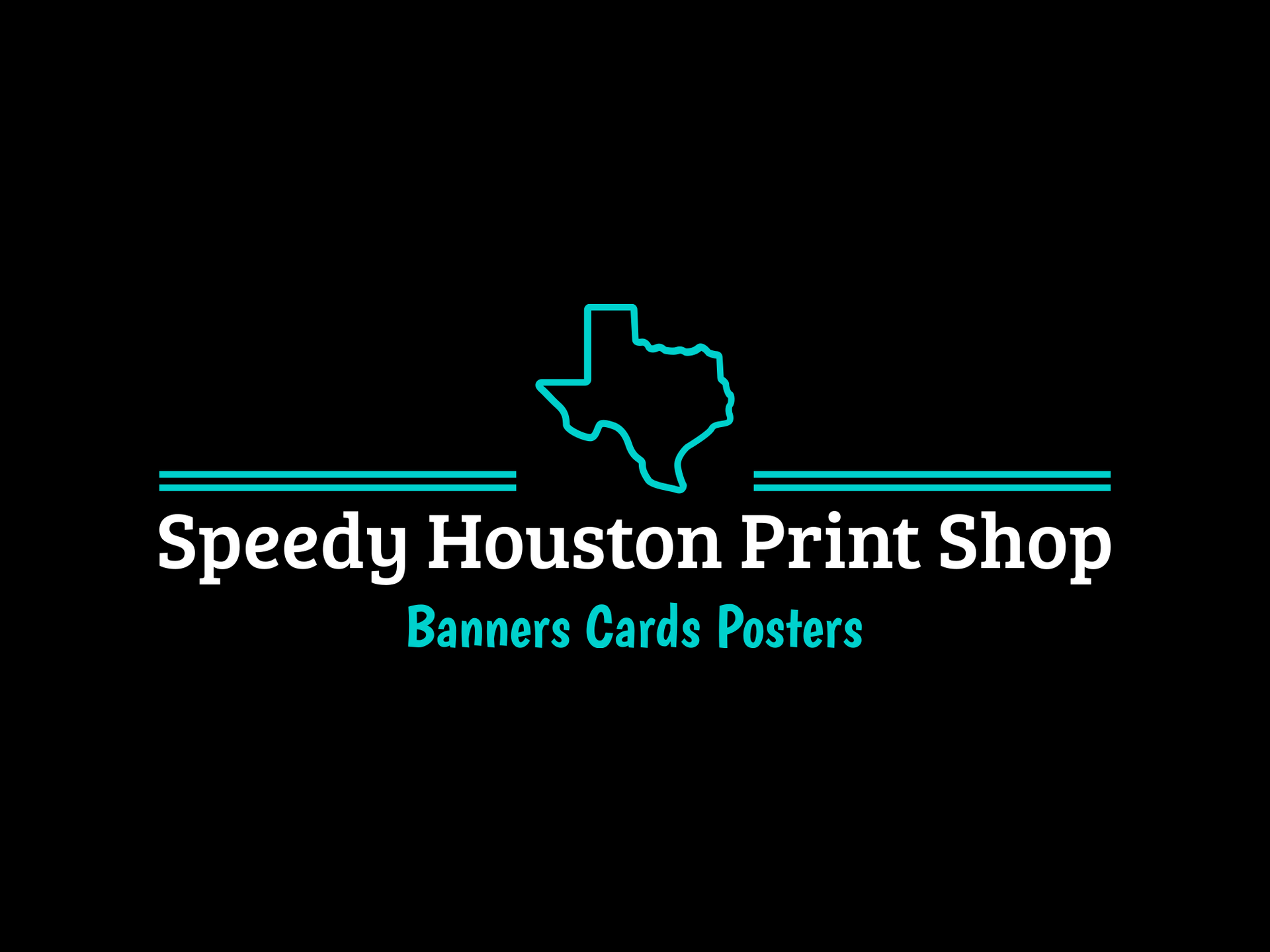Large format printing is a versatile and effective way to showcase graphics, designs, and images. It is a type of printing that creates materials that are too large to be handled by standard commercial printing presses. The demand for large format printing services has increased significantly over the years due to the capability of producing larger-than-life graphics, designs, and images.
Large format printing is used for producing a wide array of large-scale items, such as banners, posters, murals, wall graphics, billboards, and more. It is characterized by the ability to produce high-quality prints on a variety of materials, including vinyl, fabric, and paper. Large format printing is essential for businesses that want to create eye-catching displays for trade shows, events, and retail environments.
Key Takeaways
- Large format printing is a versatile and effective way to showcase graphics, designs, and images.
- Large format printing is used for producing a wide array of large-scale items, such as banners, posters, murals, wall graphics, billboards, and more.
- Large format printing is essential for businesses that want to create eye-catching displays for trade shows, events, and retail environments.
Basics of Large Format Printing
Understanding Large Format Printing
Large format printing refers to printing images, graphics, and texts on a larger scale than the standard printing sizes of 8.5 x 11 inches or A4 paper. This type of printing is commonly used for banners, posters, billboards, trade show displays, vehicle wraps, and other large-scale advertising and promotional materials.
Large format printing is achieved using wide-format printers, which are specifically designed to handle printing on large substrates. These printers use different printing technologies, such as inkjet, solvent, UV-cured, and dye-sublimation, to produce high-quality prints.
Types of Printers and Printing Technologies
There are different types of wide-format printers available in the market, each with its own set of advantages and disadvantages. Some of the most common types of wide-format printers are inkjet printers, flatbed printers, and roll-to-roll printers.
Inkjet printers use liquid ink to print on various substrates, including vinyl, paper, fabric, and other materials. They are ideal for printing high-quality images, graphics, and texts with excellent color accuracy and resolution.
Flatbed printers use a flat printing surface to print on rigid materials, such as glass, metal, and plastics. They are ideal for printing on non-flexible substrates and can produce high-quality prints with excellent color accuracy.
Roll-to-roll printers use a roll of printing substrate that is fed through the printer to produce continuous prints. They are ideal for printing on flexible substrates, such as vinyl, fabric, and paper, and can produce high-quality prints with excellent color accuracy.
Material Selection for Large Format Printing
The selection of printing substrate is crucial for achieving high-quality prints in large format printing. Some of the most commonly used materials for large format printing are vinyl, fabric, paper, and other rigid materials.
Vinyl is a popular choice for large format printing as it is durable, weather-resistant, and can be easily applied to various surfaces. It is ideal for outdoor advertising and promotional materials, such as banners, billboards, and vehicle wraps.
Fabric is another popular choice for large format printing as it is lightweight, flexible, and can be easily transported. It is ideal for indoor advertising and promotional materials, such as trade show displays, backdrops, and banners.
Paper is a cost-effective option for large format printing and can be used for various applications, such as posters, maps, and blueprints. It is ideal for short-term advertising and promotional materials.
Ink selection is also important for achieving high-quality prints in large format printing. CMYK and RGB are the most commonly used color models for large format printing, and the selection of ink depends on the printing technology used.
In conclusion, large format printing is a versatile and effective way to produce high-quality prints for various advertising and promotional materials. The selection of printing substrate, ink, and printing technology is crucial for achieving high-quality prints with excellent color accuracy and resolution.
Design and Pre-Printing
Large format printing requires careful consideration during the design and pre-printing phase to ensure the final product meets the intended purpose. Design considerations for large formats include the intended viewing distance, the size of the final product, and the desired impact on the audience. A design that works well for a small brochure may not be effective when scaled up to a large format.
Design Considerations for Large Formats
Designers must keep in mind that the larger the format, the more space there is to fill. The design should be simple, with a clear message that is easy to read from a distance. The use of high-resolution images and graphics is crucial to ensure the final product is of high quality.
Color Management and Image Quality
Color management is a critical aspect of large format printing. The designer must ensure that the colors used in the design match the brand’s color palette. The use of high-quality images is essential to ensure the final product is of high quality. The images used must be of high resolution to avoid pixelation when scaled up to a large format.
Preparing Files for Large Format Printing
Preparing files for large format printing requires technical knowledge. The designer must ensure that the files are in the correct format and resolution. The use of vector graphics is recommended to ensure that the final product is of high quality. The designer must also ensure that the files are correctly set up for printing, including bleed and crop marks.
In conclusion, design and pre-printing are critical aspects of large format printing. Designers must consider the intended viewing distance, the size of the final product, and the desired impact on the audience. Color management and image quality are crucial to ensure the final product is of high quality. Technical knowledge is required to prepare files correctly for large format printing.
Large Format Printing Applications
Large format printing has a wide range of applications, ranging from indoor to outdoor and specialized use cases. Below are some examples of how large format printing can be used:
Indoor Applications
Large format printing can be used for indoor applications such as posters, displays, signage, trade show displays, canvas prints, wall graphics, murals, window graphics, and backdrops. These applications can be used in various environments such as offices, retail stores, museums, and galleries. Large format printing can create high-quality prints that are visually appealing and can convey a message effectively.
Outdoor Applications
Outdoor applications of large format printing include billboards, outdoor advertising, yard signs, building wraps, and vehicle wraps. Large format printing can create large-scale prints that can be seen from a distance, making them ideal for outdoor advertising. These prints can withstand harsh weather conditions and maintain their quality over time.
Specialized Applications
Large format printing can also be used for specialized applications such as floor graphics, interior design, wall murals, and interior decor. Floor graphics can be used in retail stores and events to create a unique and interactive experience for customers. Wall murals and interior decor can be used in offices, homes, and public spaces to create an immersive and visually appealing environment.
In conclusion, large format printing has a wide range of applications and can be used in various environments to create high-quality prints that are visually appealing and effective in conveying a message.
Marketing and Advertising
Large format printing has become an essential tool for businesses to reach their target audience and promote their brand. The following subsections will discuss the use cases of large format printing in marketing and advertising.
Brand Visibility and Impact
A well-designed and printed large format banner or sign can grab the attention of potential customers and create a lasting impression. Large format printing can be used to create eye-catching outdoor signage, such as A-frame signs, vinyl banners, and retractable banners, that can be placed in high-traffic areas to increase brand visibility and impact.
Advertising Campaigns and Promotions
Large format printing can be used to create promotional materials such as table covers, trade show graphics, and banners that are perfect for advertising campaigns and promotions. These materials can be customized with branding and messaging to create a cohesive and impactful advertising campaign.
Trade Shows and Event Branding
Trade shows and events provide an excellent opportunity for businesses to showcase their products and services to a targeted audience. Large format printing can be used to create trade show graphics, banners, and signs that can help businesses stand out from the competition and create a memorable brand experience for attendees.
In conclusion, large format printing is a versatile and effective tool for businesses looking to increase brand visibility, promote their products and services, and create a lasting impact on their target audience. By utilizing large format printing, businesses can create eye-catching signage and promotional materials that will help them achieve their marketing and advertising goals.
Durability and Quality
Large format printing is known for producing prints that are not only visually stunning but also durable. This makes it an ideal choice for businesses looking for long-lasting branding solutions.
Weather Resistance and Longevity
One of the main advantages of large format printing is its ability to withstand harsh weather conditions. Prints created with solvent-based inks are particularly durable and can last for years even when exposed to the elements. This makes them ideal for outdoor advertising, such as billboards, banners, and signs.
In addition to being weather-resistant, large format prints are also resistant to fading and discoloration. This is because they are printed with high-quality inks that are designed to maintain their vibrancy over time. As a result, businesses can be confident that their branding will remain consistent and eye-catching for years to come.
High-Quality Output and Consistency
Large format printing also offers high-quality output and consistency. With the latest printing technology, large format printers can produce prints with high resolution and sharp detail. This is particularly important for businesses that want to showcase their products or services in the best possible light.
Moreover, large format printing allows for high levels of customization in terms of size, shape, and design. This means that businesses can create prints that are tailored to their specific needs and branding requirements. With large format printing, consistency is also guaranteed, as each print is identical to the next, ensuring that the branding message is clear and consistent across all mediums.
In summary, large format printing is an excellent choice for businesses that require durable, high-quality prints that can withstand the elements and maintain their vibrancy over time. With its ability to produce consistent, eye-catching prints, large format printing is an effective branding solution that can help businesses stand out in a crowded marketplace.
Installation and Maintenance
Proper Installation Techniques
Installing a large format printer can be a complex process that requires careful planning and execution. It is important to ensure that the printer is installed in a location that is suitable for its size and power requirements. The printer should be placed on a level surface that is strong enough to support its weight. It is also important to ensure that the printer is properly grounded to prevent electrical hazards.
When installing a large format printer, it is important to follow the manufacturer’s instructions carefully. This includes installing the printer drivers and software, as well as calibrating the printer to ensure that it produces high-quality prints. It is also important to ensure that the printer is connected to a reliable power source and that all cables are properly connected.
Maintenance and Upkeep
Proper maintenance is essential to ensure that a large format printer operates at its best. This includes regular cleaning of the printer’s components, such as the print head, platen, and rollers. It is also important to replace worn or damaged parts, such as the ink cartridges and print heads, as soon as possible to prevent damage to the printer.
Regular maintenance also includes performing routine checks of the printer’s performance, such as print quality and speed. This can be done using built-in diagnostic tools or by printing test patterns. It is also important to keep the printer’s firmware up-to-date to ensure that it operates at its best.
In addition to maintenance, it is important to consider the printer’s flexibility and versatility. A large format printer can be used for a variety of applications, such as printing banners, posters, signs, wall coverings, and vehicle graphics. It is also important to consider the printer’s ability to laminate and mount prints, which can help to protect them from damage and improve their appearance.
Overall, proper installation and maintenance are essential for ensuring that a large format printer operates at its best. By following the manufacturer’s instructions and performing regular maintenance, users can enjoy high-quality prints and a long lifespan for their printer.
Innovations and Trends
Emerging Technologies in Large Format Printing
Large format printing is an ever-evolving industry, and businesses are constantly seeking new ways to improve their offerings and stay ahead of the curve. Emerging technologies are playing a crucial role in this process, with UV light printing being one of the most notable innovations. UV light printing allows for faster turnaround times and more vibrant colors, making it an attractive option for businesses looking to create high-impact visual communication materials.
Another emerging technology is speed. With businesses demanding faster turnaround times, large format printing companies are investing in faster printing equipment to meet these needs. This technology enables businesses to quickly produce oversized prints without sacrificing quality, which is essential for visual communication materials that need to make an impact.
Sustainability and Eco-Friendly Practices
Sustainability and eco-friendly practices are becoming increasingly important in the large format printing industry. With businesses looking to reduce their carbon footprint, large format printing companies are investing in sustainable printing practices that minimize waste and energy consumption. This includes using eco-friendly inks and materials, as well as recycling and repurposing materials whenever possible.
In addition to being environmentally friendly, sustainable printing practices can also be cost-effective. By reducing waste and optimizing resources, businesses can improve their ROI and reduce their overall printing costs. This is especially important for wide-format printing, where materials and ink costs can quickly add up.
Overall, emerging technologies and sustainable practices are transforming the large format printing industry, enabling businesses to create high-quality visual communication materials while minimizing their impact on the environment.
Operational Considerations
Large format printing is a significant investment, and it’s essential to consider the operational aspects of the technology before making a purchase. This section will cover some of the critical operational considerations when it comes to large format printing.
Cost-Effectiveness and ROI
One of the most significant operational considerations when it comes to large format printing is the cost-effectiveness of the technology. While large format printing can be expensive, it can also be a highly profitable investment. When considering the ROI of large format printing, it’s essential to consider factors such as the cost of materials, labor costs, and the potential revenue generated by the technology.
Workflow and Turnaround Time
Workflow and turnaround time are two critical operational considerations when it comes to large format printing. The workflow of large format printing involves several steps, including file preparation, printing, finishing, and shipping. It’s essential to have a streamlined workflow to ensure that the printing process is as efficient as possible.
Turnaround time is also a crucial consideration when it comes to large format printing. The faster the turnaround time, the more profitable the technology can be. It’s essential to have a clear understanding of the time it takes to complete each step of the printing process and to optimize the workflow to minimize turnaround time.
Logistics and Shipping
Logistics and shipping are also critical operational considerations when it comes to large format printing. The shipping process can be complex and expensive, especially when shipping large items. It’s essential to have a clear understanding of the logistics involved in shipping large format prints, including the cost, shipping time, and potential shipping issues.
In conclusion, when it comes to large format printing, operational considerations such as cost-effectiveness, workflow, turnaround time, and logistics are crucial. By considering these factors, businesses can ensure that they make a profitable investment in large format printing technology.
Frequently Asked Questions
What are the primary applications of large format printing in advertising?
Large format printing plays a crucial role in advertising, particularly in outdoor advertising. It is used to create billboards, banners, and posters that can be seen from a distance. Large format printing is also used to create vehicle wraps, which are essentially mobile billboards that can be used to promote a brand or product.
How can large format printing enhance retail store branding?
Large format printing can be used to create eye-catching displays that can help to draw attention to a store. It can be used to create window displays, point-of-purchase displays, and other types of in-store displays. Large format printing can also be used to create signage that can help to guide customers through a store.
What role does large format printing play in trade show displays?
Large format printing is an essential component of trade show displays. It is used to create banners, backdrops, and other types of signage that can help to attract attention to a booth. Large format printing can also be used to create floor graphics that can be used to guide visitors through a trade show.
How is large format printing utilized in vehicle wraps and graphics?
Large format printing is used to create vehicle wraps, which are essentially mobile billboards that can be used to promote a brand or product. Vehicle wraps can be used on cars, trucks, buses, and other types of vehicles. Large format printing is also used to create graphics that can be applied to windows and other surfaces.
In what ways is large format printing beneficial for architectural and engineering plans?
Large format printing is used to create architectural and engineering plans that can be used to guide construction projects. It can be used to create blueprints, diagrams, and other types of technical drawings. Large format printing can also be used to create maps and other types of geographic information.
What are the advantages of using large format printing for home decor and interior design?
Large format printing can be used to create custom wallpaper, murals, and other types of wall art. It can also be used to create custom window treatments, such as blinds and shades. Large format printing is also used to create custom flooring, such as carpeting and vinyl flooring.…
